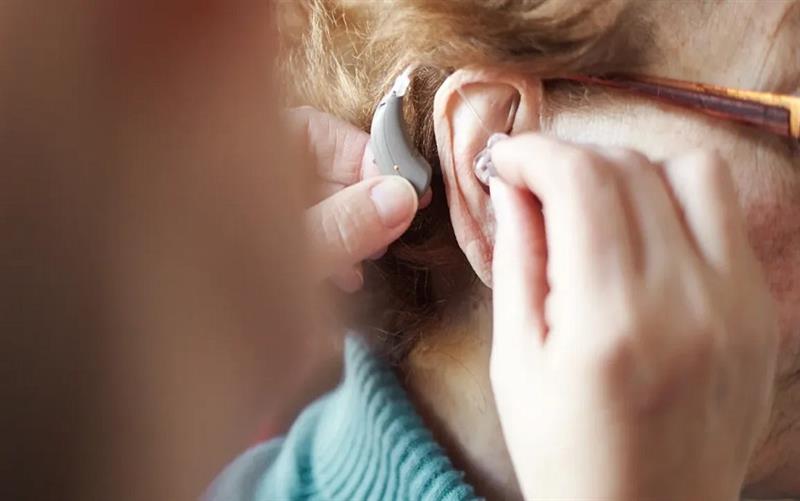
In recent years, advancements in technology have revolutionized the way we experience and interact with the world around us. One such notable development is the evolution of In-The-Ear hearing devices, offering a transformative experience for individuals with hearing impairments.
The future of In-The-Ear hearing devices is marked by a combination of sophisticated technologies that address diverse user needs, from customizable sound profiles to enhanced connectivity and well-being features. These innovations collectively contribute to a more inclusive and enriched auditory experience for individuals with hearing impairments.
As we embrace the future of sound with in-ear hearing devices, it's evident that these innovations extend far beyond traditional hearing aids. The integration of advanced technologies not only improves auditory capabilities but also fosters a more connected, inclusive, and intelligent world. The ongoing developments in this field promise a future where individuals with hearing impairments can seamlessly navigate their daily lives, enjoying the richness of sound and participating fully in the diverse tapestry of human experience.
Enhanced Hearing Experience:
In-The-Ear hearing devices leverage state-of-the-art technologies such as digital signal processing, adaptive noise cancellation, and artificial intelligence to provide users with a superior auditory experience. These features enable users to customize their hearing preferences, filter out unwanted background noise, and adapt to various listening environments seamlessly. As a result, individuals with hearing challenges can now engage more effectively in conversations, enjoy music, and participate in activities that were once hindered by their condition.
Connectivity and Accessibility:
The integration of In-The-Ear hearing devices with modern communication technology has further widened the scope of their impact. Bluetooth connectivity allows users to seamlessly connect their devices to smartphones, tablets, and other gadgets, facilitating hands-free communication and audio streaming. This not only enhances accessibility but also promotes inclusivity, enabling individuals with hearing impairments to fully participate in the digital age.
Smart Features and Artificial Intelligence:
The future of In-The-Ear hearing devices lies in their evolving smart features powered by artificial intelligence. These devices can learn and adapt to individual preferences, making real-time adjustments based on the user's environment and activities. Additionally, some devices are equipped with language translation capabilities, breaking down communication barriers and fostering global connectivity. The intersection of artificial intelligence and in-ear hearing devices opens up a realm of possibilities for personalized and intelligent audio experiences.
Health Monitoring and Well-Being:
Beyond addressing hearing impairments, in-ear devices are increasingly incorporating health monitoring features. Some models can track vital signs, monitor heart rate, and provide insights into overall well-being. This convergence of health and technology not only enhances the user's auditory experience but also contributes to a holistic approach to personal health and wellness.
Benefits Of ITE Hearing Aids
Here are some additional points to further elaborate on the advancements and benefits of in-ear hearing devices:
1. Customizable Sound Profiles:
In-ear hearing devices often come with customizable sound profiles, allowing users to fine-tune the audio to match their specific hearing needs. This level of personalization ensures a tailored listening experience that caters to individual preferences and hearing deficiencies.
2. Discreet Design and Comfort:
Modern In-The-Ear hearing devices are designed to be discreet and comfortable, addressing the aesthetic concerns that may have discouraged some individuals from using traditional hearing aids. Sleek and lightweight designs contribute to user comfort and confidence.
3. Speech Enhancement Technology:
Many In-The-Ear devices incorporate advanced speech enhancement technologies. These features focus on clarifying speech sounds, making it easier for users to understand conversations even in noisy environments. This is particularly beneficial in social settings and crowded public spaces.
4. Long Battery Life and Charging Solutions:
Continuous technological advancements have led to improvements in battery life for in-ear hearing devices. Additionally, some models feature convenient charging solutions, such as wireless charging or long-lasting rechargeable batteries, reducing the hassle of frequent battery replacements.
5. Integration with Virtual Assistants:
In-The-Ear devices are increasingly integrating with virtual assistants like Siri, Google Assistant, or Alexa. This allows users to control their devices, make calls, send messages, or access information through voice commands, further enhancing the hands-free and user-friendly aspects of these devices.
6. Educational and Professional Applications:
In-The-Ear devices have found applications beyond personal use. In educational settings, these devices can provide students with hearing impairments better access to classroom discussions and lectures. Similarly, professionals in various fields can benefit from improved communication during meetings and conferences.
7. Water-Resistant and Durable Designs:
Many In-The-Ear hearing devices are designed to be water-resistant or even waterproof, adding durability and versatility to their usage. This feature is especially beneficial for individuals who lead active lifestyles or enjoy water-related activities.
8. Feedback Suppression and Noise Management:
Advanced feedback suppression technology helps mitigate issues like whistling or squeaking sounds that may occur with traditional hearing aids. Additionally, sophisticated noise management algorithms contribute to a clearer listening experience by reducing unwanted background noise.
9. Tinnitus Management:
Some In-The-Ear devices come equipped with features dedicated to managing tinnitus, a condition characterized by persistent ringing or buzzing in the ears. These features provide relief and support for individuals dealing with both hearing loss and tinnitus.
10. Continuous Software Updates:
With the incorporation of connectivity features, In-The-Ear hearing devices can receive over-the-air software updates. This ensures that users can benefit from the latest advancements and improvements without the need for physical device upgrades.
It's ideal to keep yourself as educated with your hearing aids and a new breakthrough in the technology. Ask your query via Book an Appointment today. For more information visit https://hearing.careinc.ca or you can call us today at (403)605-6300